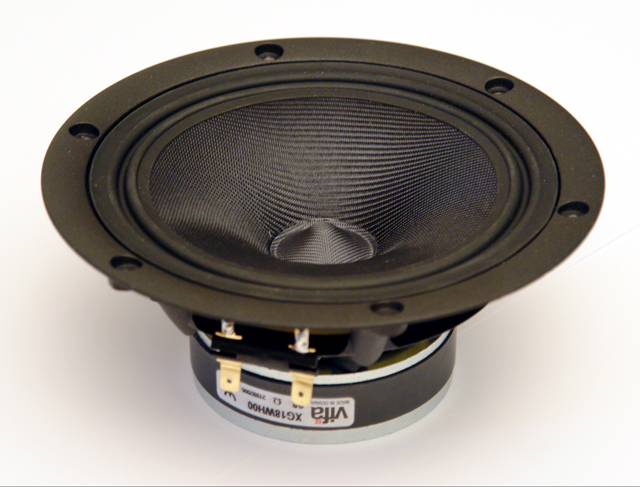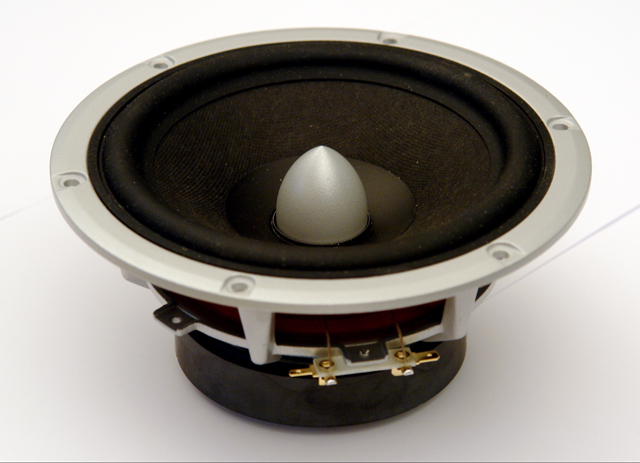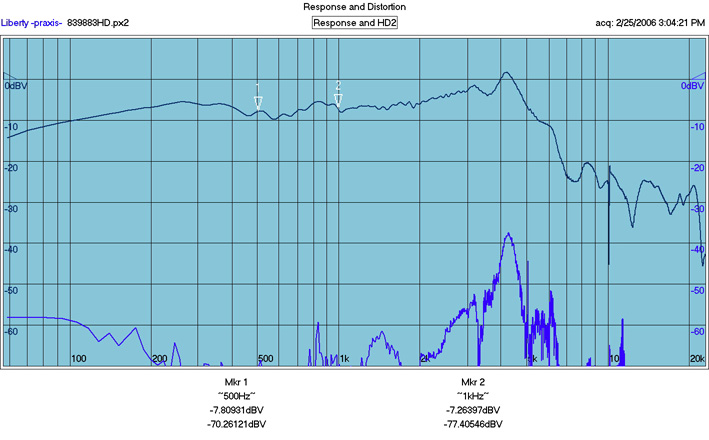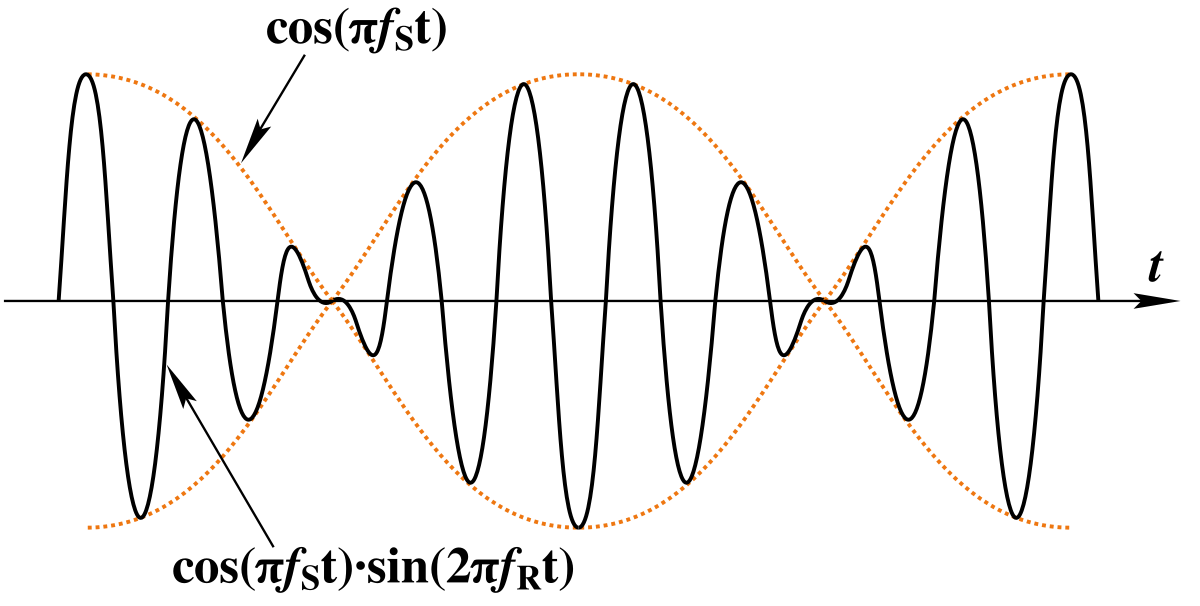Hi All,
First, a bit of background: I'm trying to pick a midrange for a three way system that I'm designing for a friend. This is to be a pretty inexpensive system. This implies a pretty straightforward, non-exotic crossover. This suggests well behaved drivers with low to moderate breakup modes.
So I then started looking at non-linear distortion numbers of various drivers, and arived at a question: how much distortion is acceptable - i.e. at what point does it become audible? Now, I know that this depends on drive level, the fundamental frequency, what harmonic you're looking at, etc, etc.
So, it's a complicated question (or rather, it's many questions), but I started looking into this. What I've managed to find online (I'll have to wait until I go back to work next week before I can look through some AES journals) suggests that the threshold of perceptability is about 1% (-40 dB) in most cases and for harmonics less than or equal to 3.
Now, by this criterion, the Vifa XG18 looks to be better suited to the project than say the RS180 - ignoring the price difference. Since a friend will sell me his two XG18 for $60, I pretty much can ignore the price! Now the RS180 will prebably handle higher SPLs better, since it has some distortion headroom to spare. But at a given level of, say, 90 dB SPL, the lower distortion of the RS180 doesn't seem to matter.
So, I've said all that so I can ask: at what point can we stop looking at distortion numbers and focus on other performance critera: a smooth FR, etc?
Low distortion is great of course, but are we getting carried away and a bit myopic with this? Honest question.
First, a bit of background: I'm trying to pick a midrange for a three way system that I'm designing for a friend. This is to be a pretty inexpensive system. This implies a pretty straightforward, non-exotic crossover. This suggests well behaved drivers with low to moderate breakup modes.
So I then started looking at non-linear distortion numbers of various drivers, and arived at a question: how much distortion is acceptable - i.e. at what point does it become audible? Now, I know that this depends on drive level, the fundamental frequency, what harmonic you're looking at, etc, etc.
So, it's a complicated question (or rather, it's many questions), but I started looking into this. What I've managed to find online (I'll have to wait until I go back to work next week before I can look through some AES journals) suggests that the threshold of perceptability is about 1% (-40 dB) in most cases and for harmonics less than or equal to 3.
Now, by this criterion, the Vifa XG18 looks to be better suited to the project than say the RS180 - ignoring the price difference. Since a friend will sell me his two XG18 for $60, I pretty much can ignore the price! Now the RS180 will prebably handle higher SPLs better, since it has some distortion headroom to spare. But at a given level of, say, 90 dB SPL, the lower distortion of the RS180 doesn't seem to matter.
So, I've said all that so I can ask: at what point can we stop looking at distortion numbers and focus on other performance critera: a smooth FR, etc?
Low distortion is great of course, but are we getting carried away and a bit myopic with this? Honest question.



 Low distortion in (or rather a high degree of linearity) is necessary in the whole range being excited in the device.
Low distortion in (or rather a high degree of linearity) is necessary in the whole range being excited in the device.  .
.





 :
:


Comment